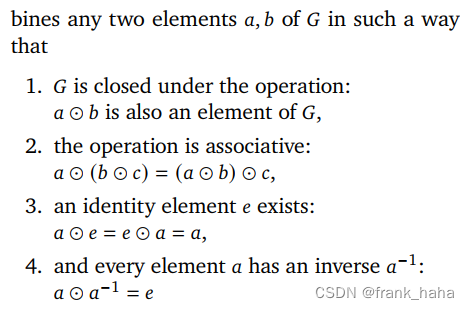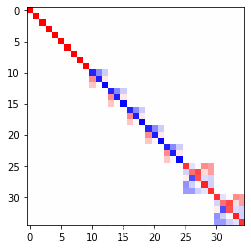图神经网络与分子表征:8. TFN
兴致冲冲的我抱着 2023-ICML-eSCN 看了好几天,毫无头绪,因为 2023-ICML-eSCN 是建立在 NequIP 这类多通道模型的基础之上的。在进一步挖掘后,我发现这些论文里频繁提到老文献 TFN,以及其背后的 Python 库 e3nn.
最近在读前沿论文时,发现很多人开始提及 SO2 关键词。简单梳理发展路线是:2023-ICML-eSCN 首次提出 SO2, 次年 ICLR 含有 SO2 模块的 2024_ICLR_EquiformerV2 就见刊了。预测哈密顿量方面 DeepH 的正统续作 DeepH2 也采用了 SO2 模块。
是什么原因让 SO2 模块这么受欢迎呢?上述几篇论文频繁提及的是,使用 SO2 能够大幅降低 tensor product 的计算量,使得模型能够拓展到更高的 degree 上。换言之,以前的这些模型本身也可以使用更高 degree 的张量,但计算量不允许,使用 SO2 就可以了,精度提高同时,速度还能受控制。
在学习 SO2(也就是 2023-ICML-eSCN 这篇论文) 的过程中,我发现,原文里提到的很多概念很难理解。这是因为,我在这一领域的学习是按照本系列的撰写路线来的。从 SchNet 到 DimeNet, PaiNN, LEFTNet,这些模型最多只用了标量+向量双通道,而使用更高维通道的模型,本人涉猎尚浅,一直以“速度慢,精度也没见有多高”这种理由回避。例如,NequIP, Allegro, SEGNN 这种优秀模型。
当时我对这些模型的理解如下图所示:

拿 NequIP 和 SchNet 做对比,二者的主框图是基本一致的,都是图卷积的模式。唯一区别在于 NequIP 在对原子做内嵌时增加了通道数,从原来的标量通道,增加到可调节的高维通道:l = 1 就是标量+向量,l = 2 是标量+向量+二维张量(矩阵)。就类似 CV 中的卷积,从只能处理灰白图像的单通道,拓展到了能处理彩色图像的 RGB 三通道。通道数越多,精度越高,速度越慢。这些都很好理解。
但是作者具体是怎么实现的,当时没有深究,于是就出现了开头讲到的困境:因为回避一些技术发展路线,而无法跟上当前领域最新进展。
兴致冲冲的我抱着 2023-ICML-eSCN 看了好几天,毫无头绪,因为 2023-ICML-eSCN 是建立在 NequIP 这类多通道模型的基础之上的。在进一步挖掘后,我发现这些论文里频繁提到老文献 TFN,以及其背后的 Python 库 e3nn.
TFN 的第一次面世已经是 2018 年了,比 NequIP 早 3 年,但二者的框架基本一致。是 TFN 奠定了上述多通道模型的技术路线,首次给出了张量积,球谐函数,CGC 系数等概念,追封为开山之作不为过。
e3nn 是多通道模型均采用的表征高维张量的 Python 库。大家可以在类 NequIP 模型(以 Genome 为例)中看到直接引入 e3nn 的字段。
from .e3nn_layer import FullyConnectedTensorProductE3nn
为了学习 e3nn,我又开始全网寻找教程,最终发现 Github 上一个教程:thu-wangz17/e3nn_notes: e3nn从入门到放弃 (github.com)
教程里简明扼要的对 e3nn 涉及的主要概念进行了讲解。此处,我按照自己的理解对相关概念进行拓展。(非常白话可能有不严谨的地方)(以及 e3x 也是很棒的教材)
首先,什么是群?
群是包含群元的集合,有以下几个性质:

就是闭包性、交互性等等,这些性质后面基本是不会用到。
有群就有群元,我们以常用群 SO3 为例,SO3 的群元,如果用矩阵形式表示的话,是一个 3x3 的矩阵。注意,并不是所有的 3x3 的矩阵都是 SO3 的群元,此处的 3x3 的矩阵指,任何一个 nx3 的矩阵乘以该 3x3 矩阵相当于在空间中进行了旋转,如下图所示:

也就是说,所有满足“相乘即旋转”性质的矩阵的几何构成了 SO3 群, SO3 群的群元可以用 3x3 的矩阵表示。
更近一步
在数学里,大家十分崇尚简约又有秩序的美。例如,在高中数学里,我们学过:任何向量可以由单位向量及其系数表示。比如,我们常说的 xy 坐标系下的坐标 (a, b),其实就是 a*单位x向量+b*单位y向量。
在群论中,我们认为,任何群元可以由一组不可约基组表示,形成类似 基组*系数 的组合,我们将其称为不可约表示 (irreducible representations, irreps)。我们认为随机抽取的群元是高维向量空间中的一点。
e3nn.o3.Irreps('10x0e + 5x1o + 2x2e')中10x0e表示有 10 10 10个 l = 0 l=0 l=0的偶宇称(e)特征,奇宇称为o。标量为 l = 0 l=0 l=0的偶宇称特征, ∵ 2 l + 1 = 1 \because 2l+1=1 ∵2l+1=1,表明维度为1-dim,并且标量不随宇称变化(不会随宇称改变符号)。矢量为 l = 1 l=1 l=1的奇宇称特征。
这句话就是多通道模型中常常看到的,初始化基组的方法。
- 10x0e:10 个 零维(scalar)偶宇称(even)特征
- 5x1o:5 个 1维(vector)奇宇称(odd)特征
- 2x2e:2 个 2维(类似二维矩阵)偶宇称特征
下面随机初始化一个群元,并将其转化为不可约表示(又叫 Wigner-D matrix),再进行可视化(下面源自thu-wangz17/e3nn_notes: e3nn从入门到放弃 (github.com))
import os
os.environ['KMP_DUPLICATE_LIB_OK'] = "True"
import matplotlib.pyplot as plt
import torch
from torch import nn
from e3nn import o3
irreps = o3.Irreps("10x0e + 5x1o + 2x2e")
rot = -o3.rand_matrix()
D = irreps.D_from_matrix(rot)
print(D.size())
plt.imshow(D, cmap='bwr', vmin=-1, vmax=1)
在该例中,我们
-
irreps = o3.Irreps("10x0e + 5x1o + 2x2e")确定不可约表示 -
rot = -o3.rand_matrix()产生一个随机旋转矩阵。- 旋转矩阵
M ( α , β , γ ) = R z ( α ) R x ( β ) R z ( γ ) = ( cos α cos γ − cos β sin α sin γ − cos β cos γ sin α − cos α sin γ sin α sin β cos γ sin α + cos α cos β sin γ cos α cos β cos γ − sin α sin γ − cos α sin β sin β sin γ cos γ sin β cos β ) \begin{aligned} \mathcal{M}(\alpha, \beta, \gamma) &= \mathcal{R}_z(\alpha)\mathcal{R}_x(\beta)\mathcal{R}_z(\gamma)\\ &= \begin{pmatrix} \cos\alpha\cos\gamma -\cos\beta\sin\alpha\sin\gamma & -\cos\beta\cos\gamma\sin\alpha - \cos\alpha\sin\gamma & \sin\alpha\sin\beta \\ \cos\gamma\sin\alpha + \cos\alpha\cos\beta\sin\gamma & \cos\alpha\cos\beta\cos\gamma - \sin\alpha\sin\gamma & -\cos\alpha\sin\beta \\ \sin\beta\sin\gamma & \cos\gamma\sin\beta & \cos\beta \end{pmatrix} \end{aligned} M(α,β,γ)=Rz(α)Rx(β)Rz(γ)= cosαcosγ−cosβsinαsinγcosγsinα+cosαcosβsinγsinβsinγ−cosβcosγsinα−cosαsinγcosαcosβcosγ−sinαsinγcosγsinβsinαsinβ−cosαsinβcosβ
- 旋转矩阵
-
D = irreps.D_from_matrix(rot)是对应于旋转矩阵的表示。由于表示为10x0e + 5x1o + 2x2e,因此结果为10个标量( l = 0 l=0 l=0)、5个 3 × 3 3\times 3 3×3矩阵与2个 5 × 5 5 \times 5 5×5的矩阵的直和。- 直和得到的为对角块矩阵。
D.size()为 ( 35 , 35 ) (35, 35) (35,35),其中 35 = 10 ∗ ( 2 ∗ 0 + 1 ) + 5 ∗ ( 2 ∗ 1 + 1 ) + 2 ∗ ( 2 ∗ 2 + 1 ) 35=10 * (2 * 0 + 1) + 5 * (2 * 1 + 1) + 2 * (2 * 2 + 1) 35=10∗(2∗0+1)+5∗(2∗1+1)+2∗(2∗2+1)。
如下图所示:

最后,我们看一下 TFN 中的实现:
f i ′ = 1 z ∑ N i f j ⊗ h ( ∥ x ⃗ i j ∥ ) Y ( x i j ⃗ ∥ x ⃗ i j ∥ ) f_i^\prime = \frac{1}{\sqrt{z}} \sum_{\mathcal{N}_i}f_j\otimes h(\parallel \vec{x}_{ij}\parallel)Y(\frac{\vec{x_{ij}}}{\parallel \vec{x}_{ij}\parallel}) fi′=z1Ni∑fj⊗h(∥xij∥)Y(∥xij∥xij)
其中 f j f_j fj和 f i ′ f_i^\prime fi′分别为节点 j j j的特征和节点 i i i在下一神经网络层的特征, z z z为节点 i i i的度, N ∗ i \mathcal{N}*_i N∗i为节点 i i i的近邻, x ⃗ i j \vec{x}_{ij} xij为节点 i i i和 j j j之间的相对矢量。 h h h为MLP, Y Y Y为球谐函数。 x ⊗ ( w ) y x\otimes (w)y x⊗(w)y为 x x x和 y y y的直积,其中参数为 w w w,对应TFN的 h ( ⋅ ) h(\cdot) h(⋅)。
from torch_cluster import radius_graph
from torch_scatter import scatter
from e3nn import nn as enn
from e3nn.math import soft_one_hot_linspace
irreps_input = o3.Irreps("10x0e + 10x1e")
irreps_output = o3.Irreps("20x0e + 10x1e")
num_nodes = 100
pos = torch.randn(num_nodes, 3) # random node positions
# create edges
max_radius = 1.8
edge_src, edge_dst = radius_graph(pos, max_radius, max_num_neighbors=num_nodes - 1)
edge_vec = pos[edge_dst] - pos[edge_src]
# compute z
num_neighbors = len(edge_src) / num_nodes
f_in = irreps_input.randn(num_nodes, -1)
print(f_in.size())
irreps_sh = o3.Irreps.spherical_harmonics(lmax=2)
print(irreps_sh)
sh = o3.spherical_harmonics(irreps_sh, edge_vec, normalize=True, normalization='component')
print(edge_vec.size(), sh.size())
* f_in为 ( 100 , 40 ) (100, 40) (100,40)的张量,其中100为节点数num_nodes, 40 = 10 ∗ ( 2 ∗ 0 + 1 ) + 10 ∗ ( 2 ∗ 1 + 1 ) 40=10 * (2 * 0 + 1) + 10 * (2 * 1 + 1) 40=10∗(2∗0+1)+10∗(2∗1+1)。
* o3.Irreps.spherical_harmonics(lmax=2)表示取球谐函数到 l l l最大为2,即取 0 , 1 , 2 0, 1, 2 0,1,2。
* sh的第一个维度为edge_src的维度,即边的个数;第二个维度 = ( 2 ∗ 0 + 1 ) + ( 2 ∗ 1 + 1 ) + ( 2 ∗ 2 + 1 ) =(2 * 0 + 1) + (2 * 1 + 1) + (2 * 2 + 1) =(2∗0+1)+(2∗1+1)+(2∗2+1)。
tp = o3.FullyConnectedTensorProduct(irreps_in1=irreps_input, irreps_in2=irreps_sh, irreps_out=irreps_output, shared_weights=False)
print(tp)
print(tp.instructions)
print(o3.FullTensorProduct(irreps_in1=irreps_input, irreps_in2=irreps_sh))
* tp计算了 f j ⊗ ( w ) Y ( ⋅ ) f_j \otimes (w) Y(\cdot) fj⊗(w)Y(⋅),其中irreps_input对应着节点 j j j的特征的表示,irreps_sh对应着球谐函数 Y Y Y。 f i ′ f_i^\prime fi′,即输出的维度由irreps_out控制。
* o3.FullyConnectedTensorProduct实际上是双线性计算,权重的维度为(output, i n p u t 1 input_1 input1, i n p u t 2 input_2 input2)。在上面的例子中,irreps_inputs ( i n p u t 1 input_1 input1)为10x0e+10x1e,球谐函数irreps_sh ( i n p u t 2 input_2 input2)为1x0e+1x1o+1x2e。暂时先不考虑输出的表示要求,正常的张量积(o3.FullyTensorProduct)将会得到
(10 × 0e + 10 × 1e) ⊗ (1 × 0e + 1 × 1o + 1 × 2e)
= 10 × 0e ⊗ 1 × 0e + 10 × 1e ⊗ 1 × 0e + 10 × 0e ⊗ 1 × 1o + 10 × 1e ⊗ 1 × 1o + 10 × 0e ⊗ 1 × 2e + 10 × 1e ⊗ 1 × 2e
= 10 × 0e + 10 × 1e + 10 × 10 + 10 × (0 ⊕ 1 ⊕ 2)o + 10 × 2e + 10 × (1 ⊕ 2 ⊕ 3)e
= 10 × 0o + 10 × 0e + 20 × 1o + 20 × 1e + 10 × 2o + 20 × 3e
推导中利用了 e × e = e , e × o = o , l 1 ⊗ l 2 = ⨁ l i = ∣ l 1 − l 2 ∣ l 1 + l 2 l i e\times e=e, e\times o=o, l_1\otimes l_2=\bigoplus_{l_i=\vert l_1-l_2\vert}^{l_1+l_2}l_i e×e=e,e×o=o,l1⊗l2=⨁li=∣l1−l2∣l1+l2li。而对于o3.FullyConnectedTensorProduct相当于只取正常的张量积中对应的部分,并令这部分前的权重为可学习的参数,如果irreps_output中包含不在正常的张量积中的项,则其对应的权重数量为0 (e.g. o3.FullyConnectedTensorProduct(o3.Irreps('10x0e'), o3.Irreps('3x1o'), o3.Irreps('4x0o'))输出为FullyConnectedTensorProduct(10x0e x 3x1o -> 4x0o | 0 paths | 0 weights),因为 l 1 = 0 l_1=0 l1=0的偶宇称与 l 2 = 1 l_2=1 l2=1的奇宇称的输出只能为 l = 1 l=1 l=1的奇宇称,可以验证o3.FullyConnectedTensorProduct(o3.Irreps('10x0e'), o3.Irreps('3x1o'), o3.Irreps('4x1o'))的输出为FullyConnectedTensorProduct(10x0e x 3x1o -> 4x1o | 120 paths | 120 weights),存在可学习权重)。
* o3.FullyConnectedTensorProduct的权重数量计算:
e.g. 以上面的cell中的输入和输出为例,输入为10x0e + 10x1e和1x0e+1x1o+1x2e,输出为20x0e + 10x1e。其中输出为 20 × 0 e 20\times 0e 20×0e的输入部分只能为 10 × 0 e ⊗ 1 × 0 e 10\times 0e \otimes 1\times 0e 10×0e⊗1×0e,对应的权重数量为 20 × 10 × 1 = 200 20\times 10 \times 1=200 20×10×1=200 (双线性计算的权重维度),而 10 × 1 e 10\times 1e 10×1e的输入部分只能为 10 × 1 e ⊗ 1 × 0 e + 10 × 1 e ⊗ 1 × 2 e 10\times 1e \otimes 1\times 0e + 10\times 1e \otimes 1\times 2e 10×1e⊗1×0e+10×1e⊗1×2e,对应的权重数量为 10 × 10 × 1 + 10 × 10 × 1 = 200 10\times 10 \times 1 + 10 \times 10 \times 1=200 10×10×1+10×10×1=200,所以总的权重数量为400 (可通过tp.instructions查看,显示的path_shape即为这几个路径对应的权重的维度)。
num_basis = 10
edge_length_embedding = soft_one_hot_linspace(
edge_vec.norm(dim=1),
start=0.0,
end=max_radius,
number=num_basis,
basis='smooth_finite',
cutoff=True,
)
edge_length_embedding = edge_length_embedding.mul(num_basis**0.5)
print(edge_vec.size(), edge_length_embedding.size())
fc = enn.FullyConnectedNet([num_basis, 16, tp.weight_numel], torch.relu)
weight = fc(edge_length_embedding)
print(weight.shape)
print('\nParameters of network h:')
for i in fc.parameters():
print(i.size())
summand = tp(f_in[edge_src], sh, weight)
print('\n', summand.size())
* soft_one_hot_linspace将每个x值根据选取的基组投影 1 Z f i ( x ) \frac{1}{Z}f_i(x) Z1fi(x)。
* 上述操作是为了构建 h ( ∥ x i j ⃗ ∥ ) h(\parallel \vec{x_{ij}} \parallel) h(∥xij∥): h ( ⋅ ) h(\cdot) h(⋅)将原子间距映射为双线性计算中张量积的系数。为了构建该系数,首先利用原子间距产生维度为(边的个数, 基组数量)的特征作为网络的输入。
* o3.nn.FullyConnectedNet接受一个列表作为参数,类似于torch.nn.Sequential构建一个多层神经网络网络。网络的输入维度应等于基组的数量,输出应等于tp的所需的权重的维度。
* tp(f_in[edge_src], sh, weight)计算了 x ⊗ ( w ) y x\otimes (w)y x⊗(w)y。
f_out = scatter(summand, edge_dst, dim=0, dim_size=num_nodes).div(num_neighbors ** 0.5)
print(f_out.size())

torch_scatter.scatter第一个参数为输入的特征,第二个参数为指标,以一维张量为例,scatter函数将根据指标将相同的指标所对应的输入特征进行约化聚合。因此f_out是根据edge_dst将相同指标的summand聚合 (相同指标的edge_dst代表着对应的edge_src指向相同的目标节点,因此这些源节点为该目标节点 i i i的近邻 N i \mathcal{N}_i Ni)。.div(num_neighbors ** 0.5)计算了 1 z \frac{1}{\sqrt{z}} z1。
限于时间,本文主要介绍 TFN 中涉及的 tensor product 概念。TFN 中还有 CGC 系数,Wigner D 矩阵等细节,读者可以自行学习(找 ChatGPT
更多推荐
 已为社区贡献7条内容
已为社区贡献7条内容









所有评论(0)